
Reduction and passage of time. Which engine to choose so as not to lose money
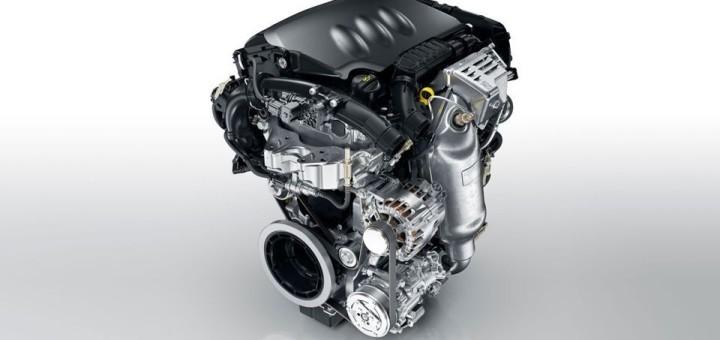 In today's automotive world, turbocharged gasoline engines with relatively low power are somewhat of a feature of mass-class cars. This is due to the fact that thanks to the turbocharger, more power is achieved while reducing fuel consumption. In this article, we'll focus on a selection of subcompact powertrains to look out for when looking for a used car for yourself, as well as those that are best avoided.
In today's automotive world, turbocharged gasoline engines with relatively low power are somewhat of a feature of mass-class cars. This is due to the fact that thanks to the turbocharger, more power is achieved while reducing fuel consumption. In this article, we'll focus on a selection of subcompact powertrains to look out for when looking for a used car for yourself, as well as those that are best avoided.
Recommended engines:
1.2 Clean technology (PSA)
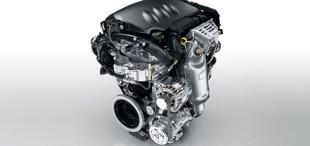 This engine is the best example of how downsizing can go hand in hand with uptime. Users and mechanics praise this design for above-average durability and low fuel consumption. The work culture is also good, despite the three-cylinder design. The engine can be found in a 130 hp variant, as well as 110 hp, 75 hp variants. and 82 hp
This engine is the best example of how downsizing can go hand in hand with uptime. Users and mechanics praise this design for above-average durability and low fuel consumption. The work culture is also good, despite the three-cylinder design. The engine can be found in a 130 hp variant, as well as 110 hp, 75 hp variants. and 82 hp
Weaker versions have intake manifold injection and no turbocharger, which for some users will be a real advantage. Naturally aspirated versions entered the market in 2012, and turbocharged ones in 2014. The drive has less weight, reduced internal friction and a two-stage cooling system. Few faults concern, among other things, an auxiliary belt and a leaky crankshaft. The engine can be found, among others, in the Peugeot 308 II or the Citroen C4 Cactus.
1.0 MPI / TSI EA211 (Volkswagen)
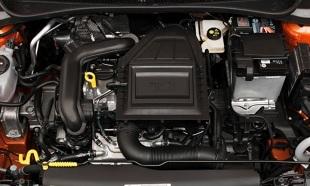 This is a project from a family of engines marked with the code EA211. The unit has 3 cylinders and is also available in a naturally aspirated version (MPI). In the timing drive, the manufacturer used a belt that is cheaper and more durable (surprisingly) compared to older chain driven designs (EA111). An engine without a turbocharger can be found, for example, in the VW Polo, Seat Ibiza or Skoda Fabia. It appeared on the market in 2011 and develops power from 60 to 75 hp. Its dynamics is at an acceptable level.
This is a project from a family of engines marked with the code EA211. The unit has 3 cylinders and is also available in a naturally aspirated version (MPI). In the timing drive, the manufacturer used a belt that is cheaper and more durable (surprisingly) compared to older chain driven designs (EA111). An engine without a turbocharger can be found, for example, in the VW Polo, Seat Ibiza or Skoda Fabia. It appeared on the market in 2011 and develops power from 60 to 75 hp. Its dynamics is at an acceptable level.
Users say that this is the ideal engine for getting around the city. On the road, there may not be enough power, especially when overtaking. Mechanics have reported problems with the coolant pump as it can wear out prematurely, although this is not a common problem. The engine has a reputation for durability. The Supercharged 1.0 (TSI) engine has been in production since 2014 and is widely used in Volkswagen Group compact class models such as the Audi A3, VW Golf and Skoda Octavia or Rapid (since 2017). This turbocharged petrol engine is an efficient and economical source of propulsion that can be recommended with a clear conscience.
1.4 TSI EA211 (Volkswagen)
 Upgraded engines, designated EA211, also feature a 1.4L engine. The engine has direct injection and a turbocharger, and in some variants also has a cylinder deactivation system to reduce average fuel consumption. The cooling system has also been changed. Some 1.4 TSI units were fitted at the CNG factory.
Upgraded engines, designated EA211, also feature a 1.4L engine. The engine has direct injection and a turbocharger, and in some variants also has a cylinder deactivation system to reduce average fuel consumption. The cooling system has also been changed. Some 1.4 TSI units were fitted at the CNG factory.
See also: driver's license. Category B and trailer towing
According to mechanics, the motor is not cheap to operate, although the costs of possible repairs are within reasonable limits. So far, users do not indicate recurring serious malfunctions. The drive was installed on the Seat Leon III or VW Golf VII.
Honda 1.2 / 1.3 l (Honda)
When browsing used car deals, it's common to find select Honda models with a 1.2 or 1.3 engine under the hood. These are very successful designs that will serve the future owner for many years. For this project, Honda decided to use a somewhat unusual solution, namely, for a long period of time, L-series motorcycles had two valves per cylinder and two spark plugs per cylinder. According to experts, you should regularly (carefully) check the valve clearance and replace the working fluids. The unit can be found in the Honda Jazz and CR-Z.
1.0 EcoBust (Ford)
 It appeared in 2012 and was considered by many as an important step in the era of small-scale gasoline engines. The motor is characterized by a small curb weight (less than 100 kg) and compact dimensions with relatively high power. Almost immediately after his debut, he won the title of "International Engine of the Year 2012" and was under the hood of the Focus, Mondeo, Fiesta, C-Max and Transit Courier.
It appeared in 2012 and was considered by many as an important step in the era of small-scale gasoline engines. The motor is characterized by a small curb weight (less than 100 kg) and compact dimensions with relatively high power. Almost immediately after his debut, he won the title of "International Engine of the Year 2012" and was under the hood of the Focus, Mondeo, Fiesta, C-Max and Transit Courier.
Initially, Ford introduced a 100-horsepower version for sale, and a little later, a 125-horsepower version. Over time, a 140-horsepower version appeared. Drivers praise the design for its flexibility, good performance and token fuel consumption. Mechanics are paying attention to problems with the cooling system, which may appear especially with units manufactured in the first year of production. There were leaks in them, which could lead to burning of the gasket under the head, and even deformation of the head itself. In 2013, engineers made adjustments to address the issue. Today you can find cars that have driven over 300 1.0s. km and are still used every day, which means that XNUMX EcoBoost is a project worth recommending.
It is better to avoid these engines:
0.6 and 0.7 R3 (smart)
According to mechanics, the unit often required repairs (even major ones) after a run of less than 100 km. km. It can be found in Lubricants (generation W450). Initially, the proposal included a volume of 600 cm3 and a power of 45 hp. Shortly after the premiere, Smart noticed that such power would not satisfy buyers. Therefore, new variants with 51 and 61 hp were introduced, and a 2002-liter variant debuted in 0.7.
Users say that repairing a running and damaged motor in an unauthorized service costs several thousand zlotys. Of course, in ASO we will pay much more. In addition, the engine often fails with the clutch, turbocharger and timing chain.
1.0 EcoTech (Opel)
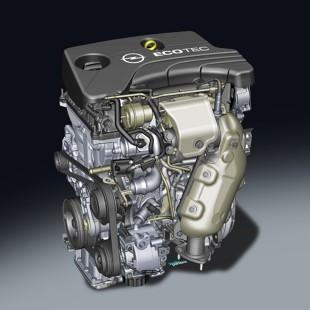 This engine was used in Opel cars in the mid-nineties. After many years of intensive work and a series of tests, the Family 1996 engine family was introduced in 0. The 1.0 liter unit, which had three cylinders, 12 valves and a timing chain, was extremely popular. Power varied from 54 to 65 hp. The first generation was called EcoTec, the second TwinPort and the third EcoFlex.
This engine was used in Opel cars in the mid-nineties. After many years of intensive work and a series of tests, the Family 1996 engine family was introduced in 0. The 1.0 liter unit, which had three cylinders, 12 valves and a timing chain, was extremely popular. Power varied from 54 to 65 hp. The first generation was called EcoTec, the second TwinPort and the third EcoFlex.
Gasoline has been installed including Corsi (B, C and D) and Aguilia (A and B). The engine is not very economical and has a low work culture. After running more or less 50 thousand. km, the timing chain often starts to make noise. In addition, the engine tends to consume oil excessively. Leaks, especially around the valve cover, are pretty standard. To make matters worse, oil pressure sensors also fail. After driving about 100 thousand km, the pressure in the engine may disappear. The EGR valve is also often dirty. Lambda probes and ignition coils can play a cruel joke.
1.4 TSI Twincharger (Volkswagen)
 The motor can be found under the hood, for example, Volkswagen Scirocco III or Seat Ibiza IV Cupra. A common malfunction of this engine is timing chain stretching. The tensioner and variator responsible for controlling the timing phases may also be faulty. There are cases of breakage of the piston and rings. If the block is damaged, repairs won't be cheap. In addition, users note the possibility of failure of the magnetic coupling of the water pump, malfunction of the injection system and high fuel consumption. In urban conditions, it can be up to 15 l / 100 km, and on the highway you need to prepare for a result in the region of 8 - 9 l / 100 km. Mechanics say post-2010 models seem to be less of a problem.
The motor can be found under the hood, for example, Volkswagen Scirocco III or Seat Ibiza IV Cupra. A common malfunction of this engine is timing chain stretching. The tensioner and variator responsible for controlling the timing phases may also be faulty. There are cases of breakage of the piston and rings. If the block is damaged, repairs won't be cheap. In addition, users note the possibility of failure of the magnetic coupling of the water pump, malfunction of the injection system and high fuel consumption. In urban conditions, it can be up to 15 l / 100 km, and on the highway you need to prepare for a result in the region of 8 - 9 l / 100 km. Mechanics say post-2010 models seem to be less of a problem.
1.6 hp (BMW / PSA)
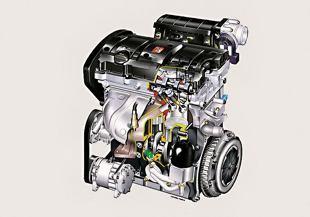 It was supposed to be a state of the art design that meets stringent exhaust emission requirements and guarantees low operating costs. In fact, it turned out to be a little different. The motor saw the light in 2006. It is equipped with a sixteen-valve cylinder head and direct fuel injection. It was originally installed under the bonnet of the MINI Cooper S, and shortly thereafter also on cars from France, such as, for example. DS3, DS4, DS5 and 308, and even RCZ. The offer included versions from 140 to 270 hp. In just a few months of operation and mileage, literally 15 - 20 thousand. km may be the problem of a stretched timing chain.
It was supposed to be a state of the art design that meets stringent exhaust emission requirements and guarantees low operating costs. In fact, it turned out to be a little different. The motor saw the light in 2006. It is equipped with a sixteen-valve cylinder head and direct fuel injection. It was originally installed under the bonnet of the MINI Cooper S, and shortly thereafter also on cars from France, such as, for example. DS3, DS4, DS5 and 308, and even RCZ. The offer included versions from 140 to 270 hp. In just a few months of operation and mileage, literally 15 - 20 thousand. km may be the problem of a stretched timing chain.
The designers said that the tensioner was to blame for this state of affairs. The defect was fixed under warranty, but interestingly, the element itself was not upgraded until 2010. Unfortunately, cases of stretched timing drive are known to this day. In addition, users of the 1.6 THP engine report the problem of excessive oil consumption. In addition, the software of the power unit, the turbocharger, which most often breaks the casing, as well as the exhaust and intake manifolds, may fail.
1.2 TSI EA111 (Volkswagen)
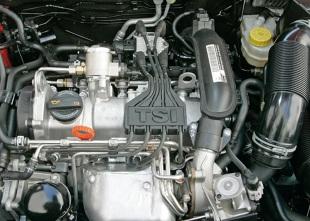 He debuted 11 years ago. It has four cylinders, direct fuel injection and, of course, a turbocharger. Initially, the engine struggled with significant problems with the timing, which was based on the design of the chain. After a relatively short run, it may begin to make noise, stretch, and this is also due to a faulty tensioner. 2012 brought a newer design that received 16 valves (previously had 8), a timing belt and two shafts (the EA111 had one shaft). In addition, in the first units (until 2012) there may be defects in the cylinder head gasket, control electronics, exhaust gas purification system and increased oil consumption. Mechanics also pay attention to the turbine, in which the control system can be unreliable. The first generation 1.2 TSI engines can be found under the hood of cars like the VW Golf VI, Skoda Octavia II or Audi A3 8P.
He debuted 11 years ago. It has four cylinders, direct fuel injection and, of course, a turbocharger. Initially, the engine struggled with significant problems with the timing, which was based on the design of the chain. After a relatively short run, it may begin to make noise, stretch, and this is also due to a faulty tensioner. 2012 brought a newer design that received 16 valves (previously had 8), a timing belt and two shafts (the EA111 had one shaft). In addition, in the first units (until 2012) there may be defects in the cylinder head gasket, control electronics, exhaust gas purification system and increased oil consumption. Mechanics also pay attention to the turbine, in which the control system can be unreliable. The first generation 1.2 TSI engines can be found under the hood of cars like the VW Golf VI, Skoda Octavia II or Audi A3 8P.
Summation
Above, we presented gasoline units, the features of which perfectly define the modern automotive market. Car manufacturers try to provide the customer with the best solutions, but as you can see, sometimes things can go wrong. After all, you can find a used car with a small (shortened) engine under the hood, which will be trouble-free and perfect for everyday use.
See also: Testing electric Opel Corsa